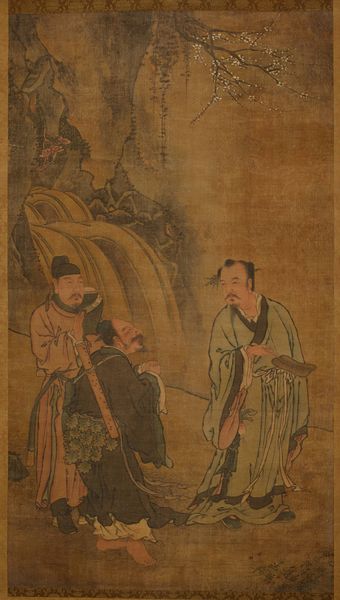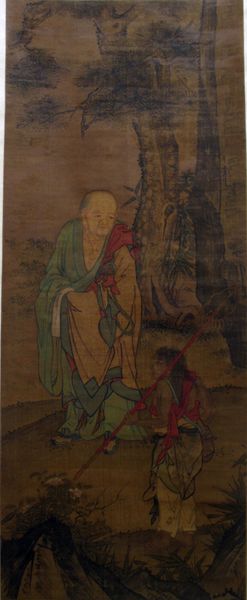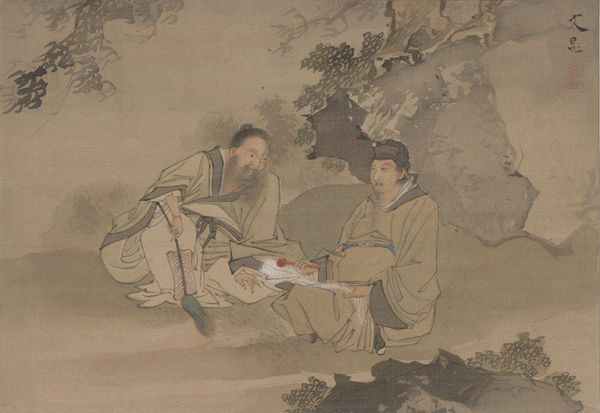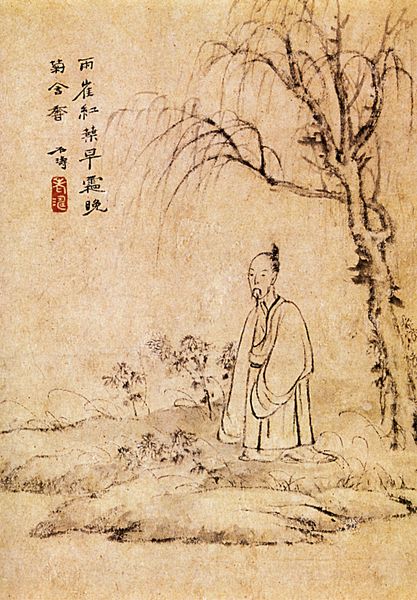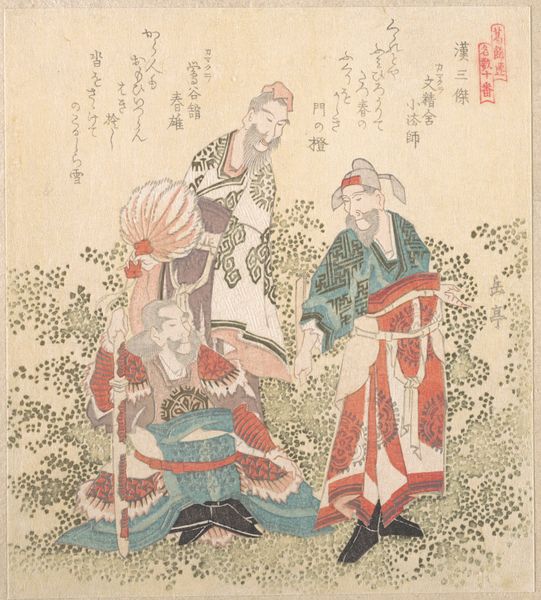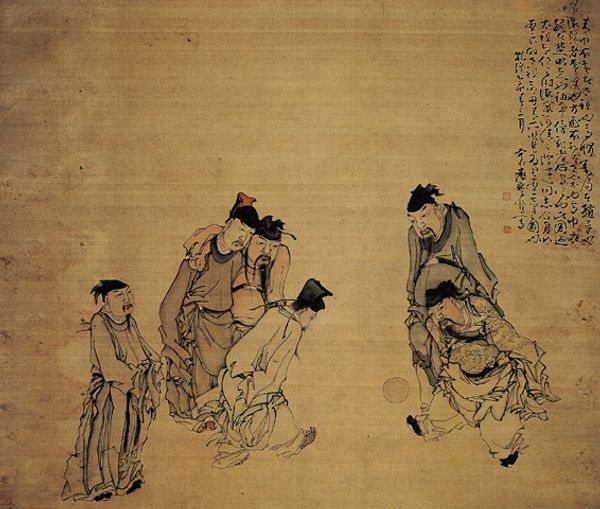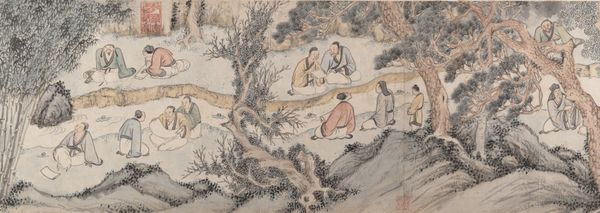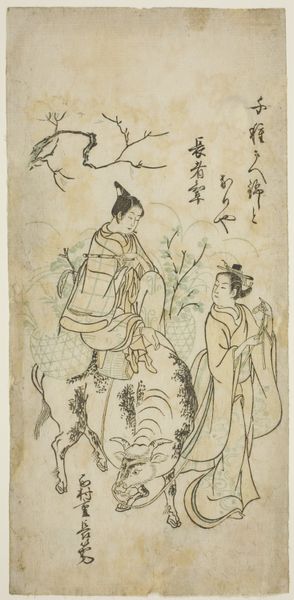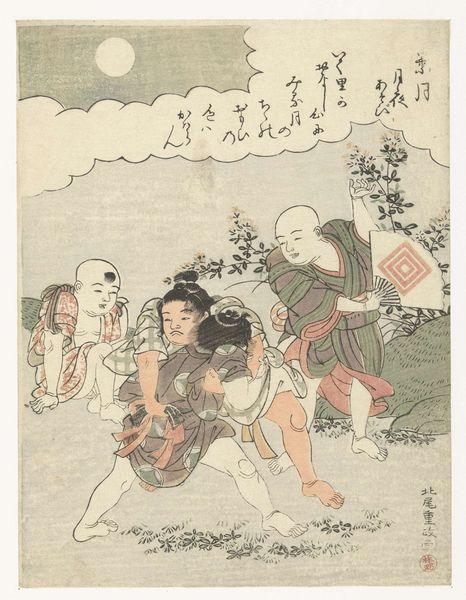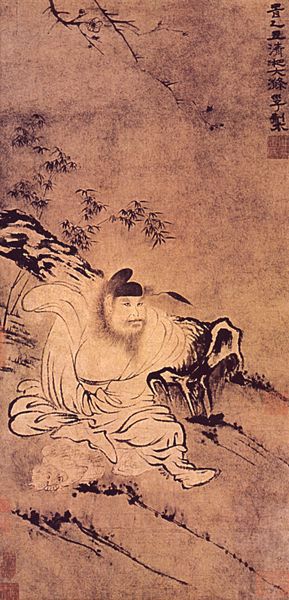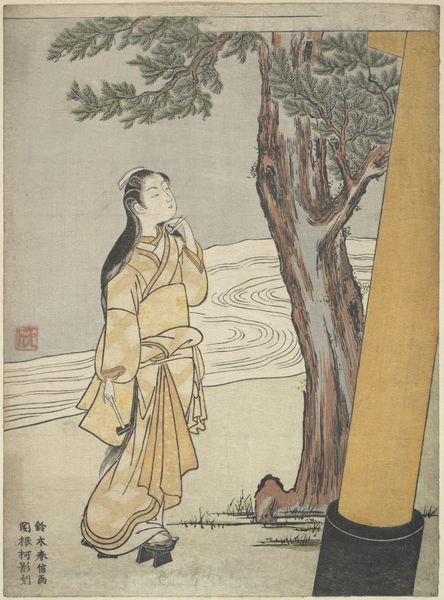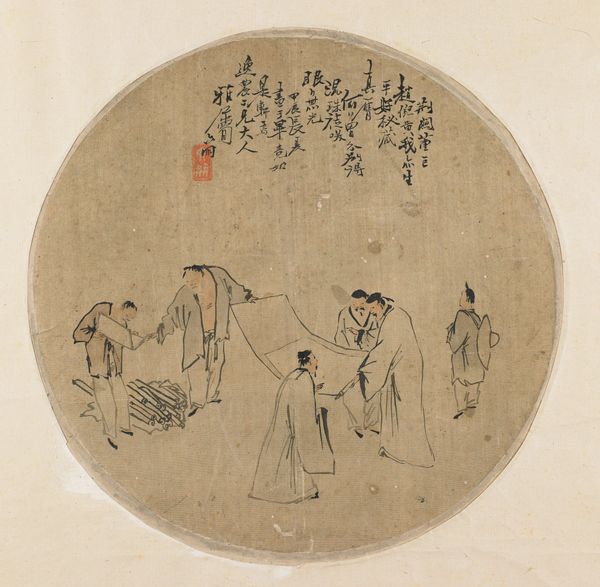
watercolor, hanging-scroll, ink
#
water colours
#
asian-art
#
landscape
#
ukiyo-e
#
figuration
#
watercolor
#
hanging-scroll
#
ink
#
coloured pencil
Dimensions: 44 3/4 × 20 in. (113.67 × 50.8 cm) (image)77 × 28 3/4 in. (195.58 × 73.03 cm) (with roller)
Copyright: Public Domain
"Three Laughers of Tiger Ravine" was painted by Yosa Buson. At first glance this painting might seem like a peaceful depiction of friendship, but it also provides commentary on cultural and religious identity during Buson’s time. The three figures, each representing a different religious tradition, are depicted together in harmony. We see Taoism in the figure of Tao Yuanming, Buddhism in the monk Huiyuan, and Confucianism in Lu Xiujing. Traditionally, the story ends with the monk Huiyuan not wanting to cross a certain boundary out of the temple, as he wasn’t allowed to leave the temple's grounds. As the story goes, when the three men were so caught up in conversation that Huiyuan unknowingly crossed the boundary, they all burst into laughter together. Buson’s depiction of these three figures might suggest a unity that transcends religious boundaries. It is thought that the artist is highlighting a moment of shared humanity, and perhaps even critiquing the strict religious divisions of the time. Buson uses the figures and the setting to invite us to consider the possibilities of understanding and acceptance beyond perceived differences. It reflects the artist’s own personal and emotional desires for social unity, and the universality of laughter.
Comments
minneapolisinstituteofart almost 2 years ago
⋮
The scene depicted here—three Chinese men laughing heartily—represents the climax of an ancient Chinese Buddhist parable known as “Three Laughers of Tiger Ravine,” which teaches that one must push boundaries in the pursuit of understanding. The story tells of an imagined meeting of three Chinese religious and cultural luminaries. The man with a large walking staff at left is Huiyuan (334–416), a Buddhist monk who established the famed Donglin Monastery on Mount Lu in 386. Huiyuan had taken a vow to never cross over a certain bridge spanning a gully known as Tiger Ravine, a symbolic barrier between the sacred space of his mountain monastery and the mundane world beyond. One day he invited two friends to Donglin—that’s the celebrated Confucian poet Tao Yuanming (365–427) in the middle and the Daoist priest Lu Xiujing (406–477) at right. When Huiyuan went to see his friends off at the end of a long day of talking and drinking wine, he inadvertently crossed over the bridge at Tiger Ravine—part of the bridge can be seen in the lower right corner of this picture. Realizing that Huiyuan had broken his vow, the three men broke into laugher.
Join the conversation
Join millions of artists and users on Artera today and experience the ultimate creative platform.
